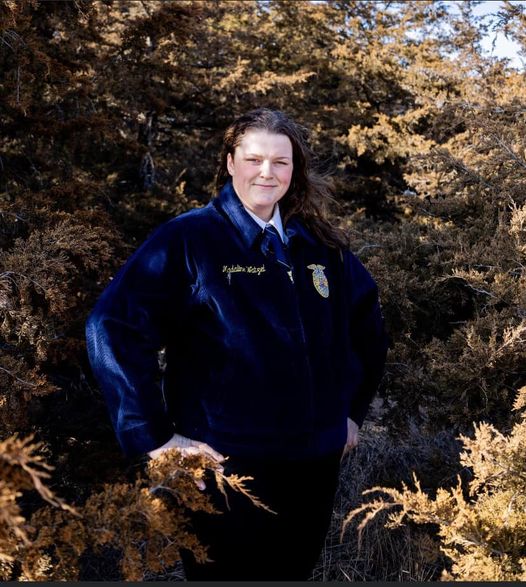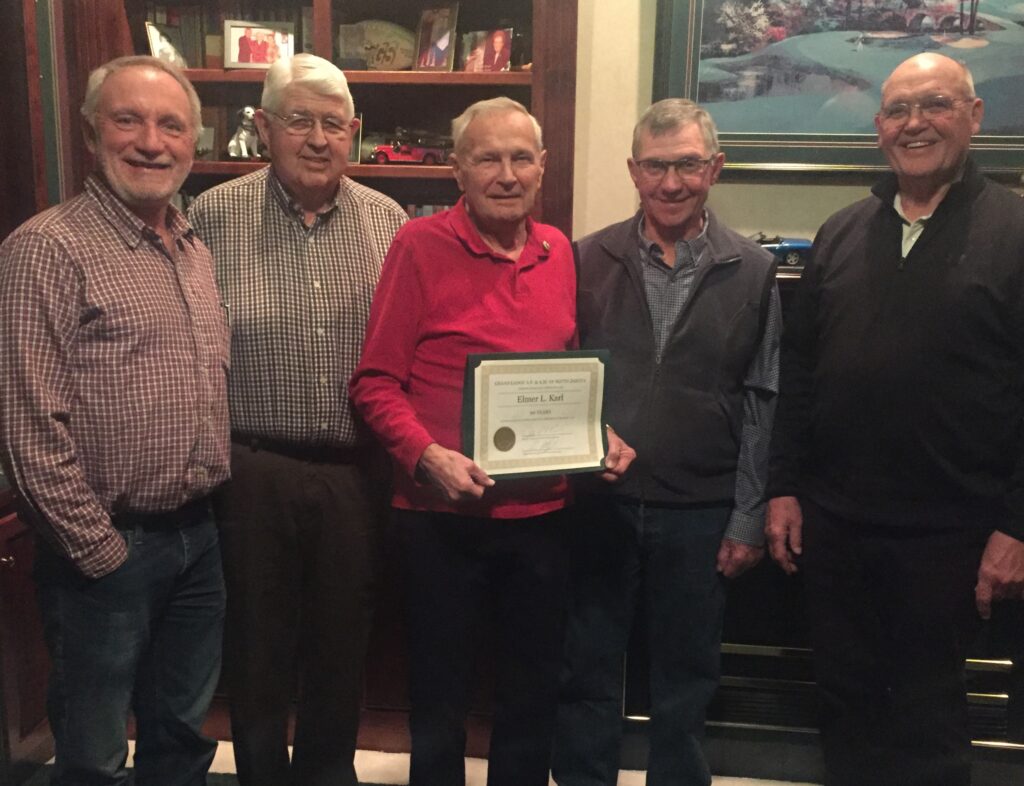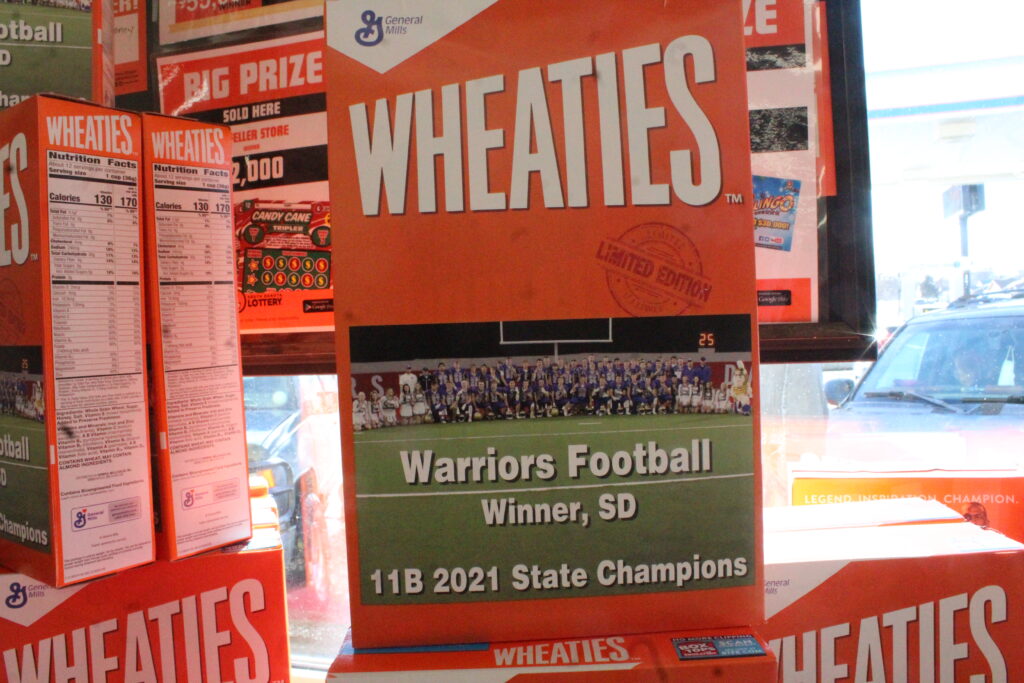By Lura Roti for South Dakota Farmers Union
South Dakota Farmers Union (SDFU) recognizes Jim Woster and Joel Keierleber for their dedicated service to South Dakota agriculture. The state’s largest agriculture organization named them the 2021 Ag Ambassadors during an awards ceremony held December 16 and 17 in Huron during the organizations 106th State Convention.
“South Dakota’s agriculture depends on strong leadership. And for decades, Jim Woster and Joel Keierleber have provided wisdom, advocacy and support for South Dakota’s family farmers, ranchers and the organizations that serve them,” said SDFU President, Doug Sombke.
Jim Woster grew up on his family’s Reliance crop and cattle operation. He is a 1962 graduate of South Dakota State University. Woster went on to become a cattle buyer, agriculture columnist, Associate Editor of Tri-State Neighbor and an enthusiastic advocate for South Dakota agriculture.
Joel Keierleber fought all odds to follow his passion for farming when as a young man, the third-generation Tripp County farmer endured a devastating farm accident. A conservation-minded and progressive crop and cattle producer, Keierleber saw the need to step away from his farm from time to time to advocate for policy to support family farmers and ranchers in Pierre and Washington, D.C. Keierleber is a lifetime Farmers Union member, serving seven years on the SDFU board of directors.
To learn more about Woster and Keierleber’s passion for South Dakota Agriculture, its people and what they see for the future of agriculture, SDFU recently interviewed the 2021 Ag Ambassadors. Below is the Q&A from this interview.
Q: Tell us about how you got your start in your career?
Jim Woster: My dad, Henry, like a hundred other dads of his generation, was not able to go to college. He insisted that the Woster and McManus clan would go to college. As the oldest, I was the first to attend. And there was never any discussion about where I was going. I was going to South Dakota State University.
He also insisted that no matter what we did after college, we did something that would get us out and off the farm to see what the world has to offer.
From my first trip to the stockyards as a 10 or 11-year-old with my dad and Uncle Frank, I have always been intrigued with the stockyards. I was able to get a job at the Sioux Falls Stockyards working for the Farmers Union Livestock Exchange and never had any urge to go any other place.
Joel Keierleber: I knew I wanted to farm from the time I was 5. I grew up on a dairy farm near Clearfield. The fifth of nine children, I was driving the pickup to help dad feed small bales before I started kindergarten. After high school, I took a course in diesel mechanics and returned home to help dad. Audrey and I began saving money to buy a place of our own before our wedding. A few months before the wedding I was in a serious farm accident. My arm was caught in a silo unloader.
When I was in the hospital, they told me that I would never lift my arm above my head again. They recommended I go back to school so I could get a desk job. I did not listen to them. I figured I had not failed yet. It’s my belief that you have to fail two or three times to see if you can succeed. And Audrey stuck by me.
In 1978 we found our farm, 320 acres, three and some odd miles from Colome. It was a less than ideal time to get started. The Farm Crisis was underway, but somehow, with Audrey’s small teacher’s salary and a lot of pencil to paper, we made the payments. And we’re still here.
Q: What did you enjoy about this career in agriculture?
Joel Keierleber: Caring for the land and livestock. And I get to be creative because I have to be creative. I never stick to one plan. I sit down and pencil it out to see what the most cost-effective way will be to farm and that is what I go with.
Frugal farming led me to no-till management practices. I could not afford tillage. When I started in 1980 the fields were only at .8 percent organic matter, and they did not hold moisture. Today, my fields are between 4 and 6 percent organic matter. I also plant cover crops.
In addition to improving soil health, Audrey and I have planted thousands of trees.
Today, I enjoy sharing what I have learned with the next generation. We are helping a young man who wants to make a career of farming, take over our farm.
Jim Woster: The people. In my work, I represented farmers in the sale of their cattle, hogs and sheep. In the mornings, I’d be at the sale barn and in the afternoons, I’d be out in the country driving up and down the side roads, meeting with farmers to let them know the value of their cattle.
These customers were people like my own family and the neighbors I’d grown up with. I’d pull into a place, walk through their 80 or 90 or 100-head of cattle, tell them what they were worth and then they’d say it was coffee time or lunch time. (It got to where I knew who would invite me in for lunch, so I’d purposefully plan to be at their place around noon.) So, we would sit and visit. I got to be really close with these families.
Like I said before, Stockyard customers were just like the families I grew up with. I always say how blessed I was to have been born and raised where I was, when I was, with whom I was. It may sound hokey, but neighbors helped neighbors. They shared farm equipment and labor. Everybody worked together.
Q: Joel, tell us what you enjoyed about raising your daughters on the farm?
Joel Keierleber: Because Audrey worked fulltime as a teacher, I was always involved with raising our now grown daughters, Brecky Cwach and Christine Wood. I got up in the night to feed them bottles just as much as Audrey did.
When they were old enough, they worked right alongside us. I have always said that our two daughters can push cows through a chute faster than any of the help, who were all boys. When I was in the hospital last fall, the girls worked all the cattle – they got them DNA tested and helped wean.
*Trauma from the farm accident left Joel a Type-1 diabetic at 23. In 2020, he received a kidney transplant. While he was recovering from the transplant, he contracted COVID-19 and suffered multiple strokes. He spent 100 days in the hospital, and away from his beloved farm. Today, he is not fully recovered, but he is farming once again.
Q: Jim, tell us how you became a columnist?
It went back to my work at the Stockyards. As secretary of the Exchange, I would do the markets for radio and TV. And because of this visibility, I would get asked to volunteer to MC different events – SDSU basketball games, FFA banquets, community fundraisers, well one day, I get this call from a Sioux Falls businessman who told me he was starting a farm paper. He was up front with me. He said, “everybody knows who you are, and I need someone everyone knows to be a part of my paper.”
I was up front with him and said, “I am not a journalist or writer.” He told me to just write how I talk.
Q: Tell us about your passion for agriculture advocacy?
Joel Keierleber: Well, somebody needs to stand up for the family farm and individual farmers. I grew up watching my dad’s involvement in farm organizations. He was part of the National Farm Organization. As a child I would go to meetings with him.
I know that as farmers we are busy trying to make money. And some say they do not have time to get involved. But if we do not take time away from the farm to stand up for better prices, we will not be able to make money on the farm.
I have seen what involvement in organizations can do. Farmers Union advocated for Country of Origin Labeling (COOL). And it was good for cattle producers during the short time that we had it.
Jim Woster: The importance of agriculture and family operations really started hitting home to me with the struggles of the 1980s. We lost a lot of good farmers. And I knew a lot of farm families who lost their farms. The 80s were tough, not only economically, but socially for our state.
Q: What are your thoughts about South Dakota agriculture today and into the future?
Jim Woster: For many years, to help solve problems, farmers and ranchers formed groups – whether it be co-ops or commodity organizations. And not all these organizations may have been on the same page when it came to ways to solve these problems. Well, it appears to me, that today, when it comes to working to fix this cattle market issue, everyone is back on the same page. We are one group working together. This is encouraging.
Another thing that we are all on the same about is sustainability. You can’t attend an ag conference without at least one session focusing on sustainability. To ag people, sustainability of the environment makes sense. The land is our life and livelihood.
Joel Keierleber: I hope to see more young people get involved in farming. But it’s tough to get started in agriculture if you do not inherit land from your family. I encourage farmers looking to retire, to seek out a young farmer trying to get started and work with them to take over. I think this is a better plan than selling land to the big farmer buying up all the land in the county.
To help the next generation of small farmers, I feel they need more rural access to non-agricultural income. Since the early 90’s I have worked to get wind development started. Our area is a Class 4 wind area, one of the best in South Dakota. But we do not have the large power lines to move the electricity to areas that need it. There have been numerous groups interested. It has not happened yet.



